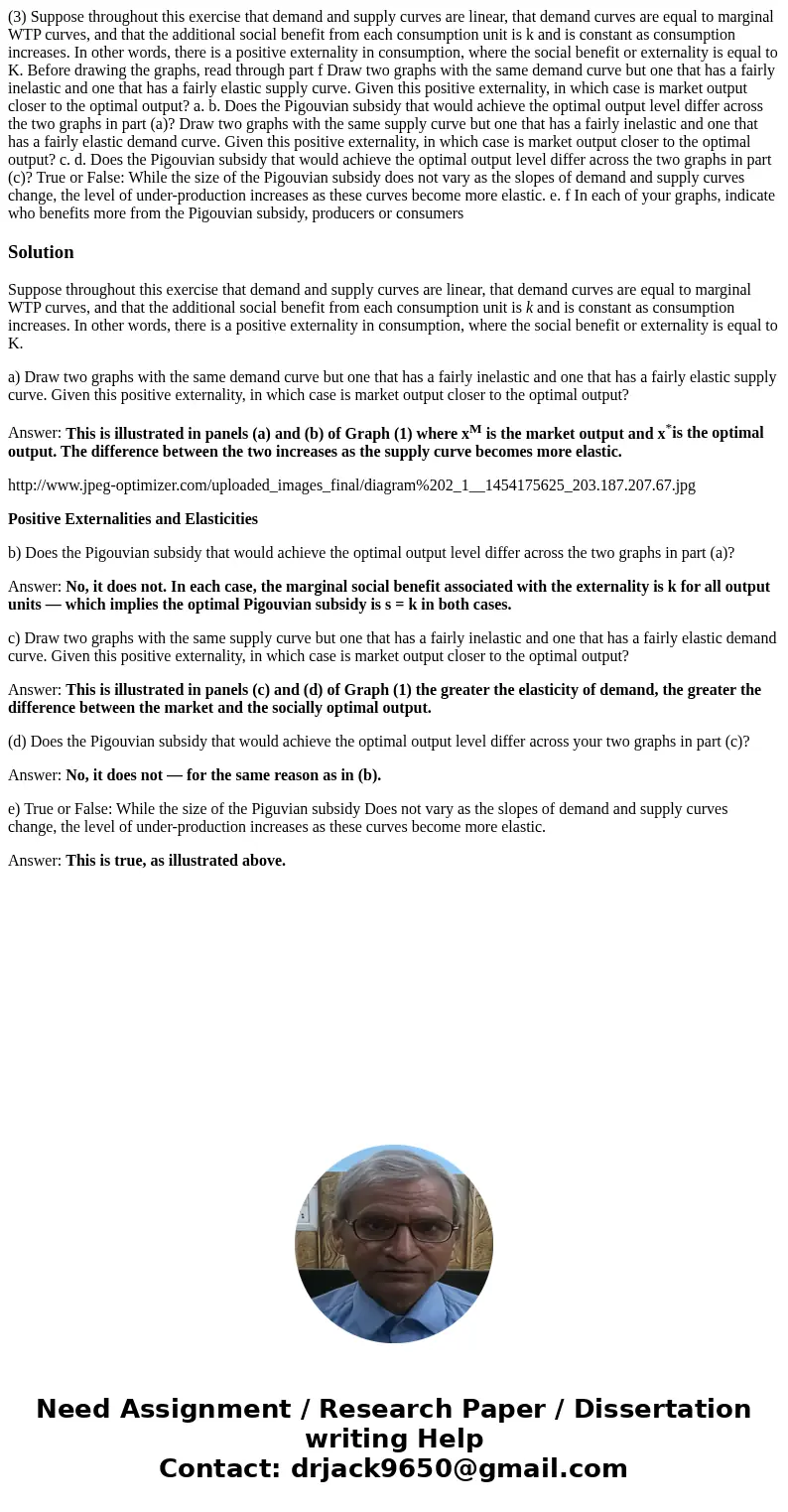3 Suppose throughout this exercise that demand and supply cu
Solution
Suppose throughout this exercise that demand and supply curves are linear, that demand curves are equal to marginal WTP curves, and that the additional social benefit from each consumption unit is k and is constant as consumption increases. In other words, there is a positive externality in consumption, where the social benefit or externality is equal to K.
a) Draw two graphs with the same demand curve but one that has a fairly inelastic and one that has a fairly elastic supply curve. Given this positive externality, in which case is market output closer to the optimal output?
Answer: This is illustrated in panels (a) and (b) of Graph (1) where xM is the market output and x*is the optimal output. The difference between the two increases as the supply curve becomes more elastic.
http://www.jpeg-optimizer.com/uploaded_images_final/diagram%202_1__1454175625_203.187.207.67.jpg
Positive Externalities and Elasticities
b) Does the Pigouvian subsidy that would achieve the optimal output level differ across the two graphs in part (a)?
Answer: No, it does not. In each case, the marginal social benefit associated with the externality is k for all output units — which implies the optimal Pigouvian subsidy is s = k in both cases.
c) Draw two graphs with the same supply curve but one that has a fairly inelastic and one that has a fairly elastic demand curve. Given this positive externality, in which case is market output closer to the optimal output?
Answer: This is illustrated in panels (c) and (d) of Graph (1) the greater the elasticity of demand, the greater the difference between the market and the socially optimal output.
(d) Does the Pigouvian subsidy that would achieve the optimal output level differ across your two graphs in part (c)?
Answer: No, it does not — for the same reason as in (b).
e) True or False: While the size of the Piguvian subsidy Does not vary as the slopes of demand and supply curves change, the level of under-production increases as these curves become more elastic.
Answer: This is true, as illustrated above.

 Homework Sourse
Homework Sourse